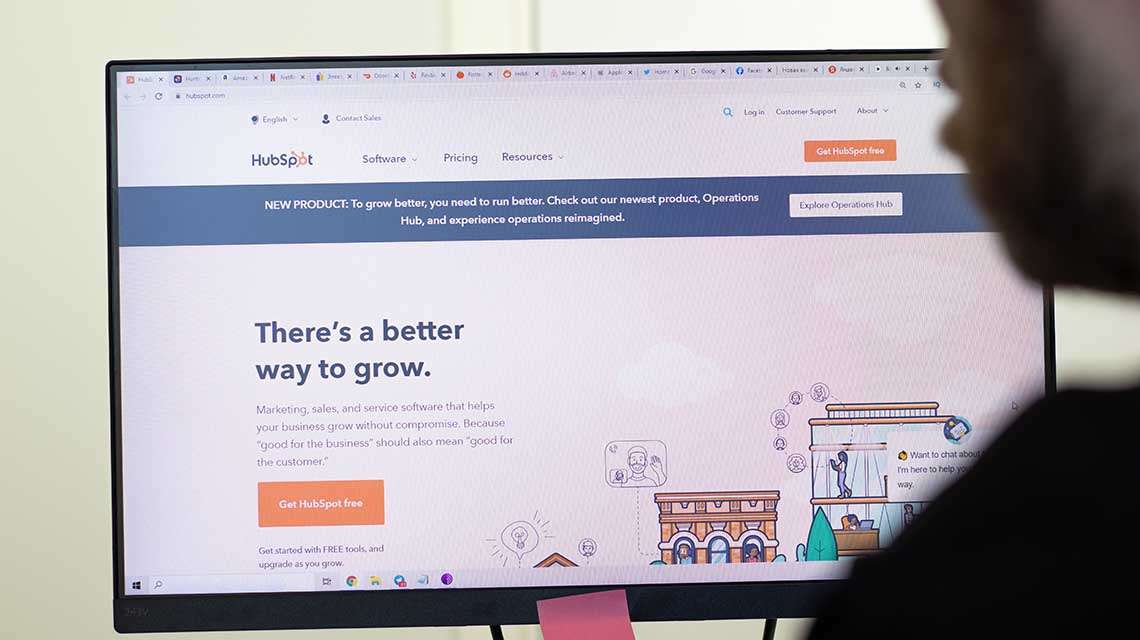The influence of online tools continues to grow in every aspect of business. But what makes one business stand out from all the others? Content Editor Andrew Pelis explores why content matters.
In a digital world, content is king and a key catalyst for business performance. In essence, content means substance. Why? Because content brings a concept to life. It informs. It inspires.
Content continues to grow in importance as an essential element to a successful marketing strategy, as evidenced by data from the Content Marketing Institute, which revealed that in 2018, 58% of marketers globally increased their spend on the creation of content.
The functions of content
It can be tailored to suit a target audience. It is an effective form of communicating values, culture, useful information, news and products.
Whether you’re addressing an industry topic, sharing an opinion or announcing a product launch, content is an essential conduit to your success.
But content goes much further. It influences emotions like happiness, motivation and trust and builds reputation, through thought-leadership pieces. It strengthens the brand.
A practical benefit
Content helps to establish your search engine optimisation (SEO) ranking. It draws customers to your website and compels them to interact or purchase.
Content does not just exist as a stand-alone strand of strategy, but straddles other important marketing disciplines, such as public relations, social media and SEO management.
Bad content can destroy a business’s reputation or lead to negative reviews and publicity. Getting content right is imperative.
Articles need to be unique. They need to be informative and offer the reader valuable insight that they might not have previously known about.
A website with high-quality content will attract other websites who want to link content to your own. This could help to enhance your website’s SEO ranking and could deliver a surge in web traffic.
A smart approach to content
Image and video content should not be underestimated when adding content to a website and attracting new visitors or explaining an issue or product in a different way. They are also particularly popular on forms of social media such as Facebook, Instagram or Twitter.
Websites with high Domain Authority and Page Authority scores can be an invaluable source of increased website traffic if they link to your site. So a website with good content can attract enquiries from other websites, keen to have a link placed on your website.
It’s always worth carrying out due diligence first, to ensure that any links you permit are from credible external websites which will further bolster your own site’s reputation, as links to poor sites can damage your SEO ranking.
An awareness of time considerations is also essential to developing the right type of content. Writing in the present tense and using words such as ‘today’ or ‘next week’ quickly lose their relevance and can result in a very short expiry date for a piece of content, so it’s important to be careful with the language used. Content should address issues with a longer-term consideration of relevance.
Any content should have a clear objective before it’s written and, if the aim is to attract customer sales, it’s worth thinking about the structure of the article.
According to Salesforce, it takes a customer 6-8 touchpoints to make an informed decision on a purchase.
The touchpoints are essentially the reader’s journey through the funnel and take them through the process of becoming aware of a product or brand, to evaluating it and then converting into a customer.
The opening gambit is your opportunity to raise awareness of issues and how they might impact potential customers.
An informative piece of content can educate readers on issues impacting them, that they’d not even thought of – and, of course, how your product is the solution!
In terms of measuring this element of content, the key metric is the number of prospects generated by supplying email addresses. But you can also gauge the success of the content by the amount of traffic generated, the bounce rate, conversion rate into potential lead, direct engagement as a result of the article, and the amount of time spent on the page in question.
The evaluation stage is where your content is pitched at an audience already aware of issues and your product. It’s your opportunity to respond to the questions that this captive audience might have, building trust and authority, in order to increase your conversion rate.
The final stage of this type of content creation is to provide the call to action that leads to purchases. Armed with an awareness of issues and why your product is the solution, this point in the content is crucial to getting deals over the line.
This is where you need to explain what makes your product stand out from the competition. You can do so through demos, product pages, comparison tools, customer stories, testimonials and webinars.
Return on investment
Measuring the impact of content can be an inexact science, even taking into account all of the online analytics tools now available.
These can report on the number of readers, how engaged they are and how many click through, but cannot gauge the emotional response to reading an article.
What is undeniable is the power of good content. It can be measured in increased website traffic, higher volumes of visitor interaction, greater online coverage, higher SEO rankings, more client enquiries and ultimately more business.
Give the reader every morsel of information and a world of motivation. Then you will truly see the power of content.
Does your content need a boost? Why not contact Mobas for an initial discussion?
